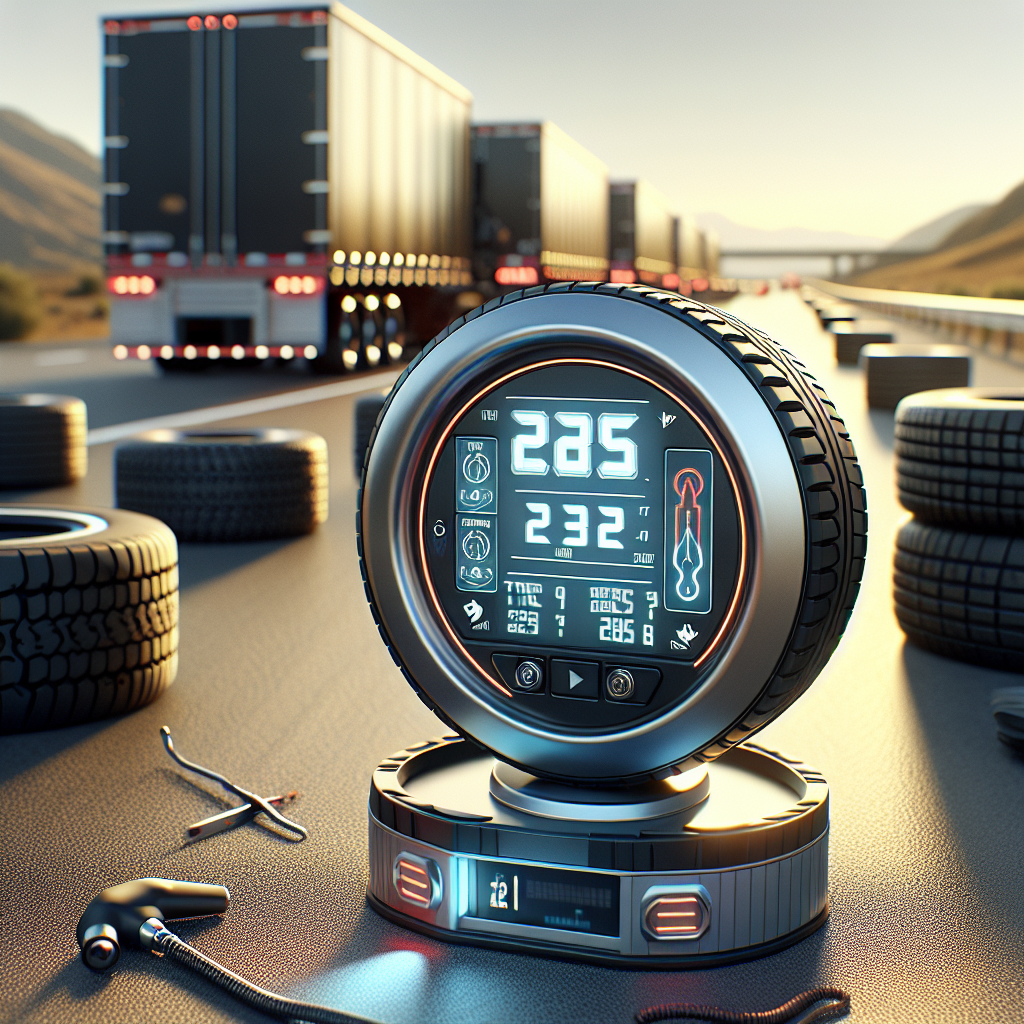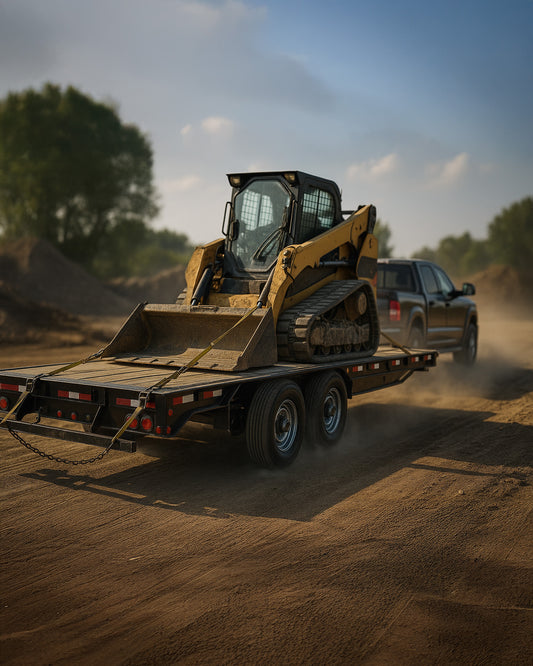

A trailer tire pressure monitor system (TPMS) is an essential component for ensuring the safety and efficiency of your trailer while on the road. This system continuously tracks the air pressure and temperature of each tire, providing real-time data that can prevent potential failures and accidents. The importance of maintaining proper tire pressure cannot be overstated; under-inflated tires can lead to blowouts, increased tire wear, and decreased fuel efficiency.
When functioning correctly, a TPMS will alert you to any irregularities, allowing you to take immediate action. However, many users encounter the issue of their system displaying the message: “capability not detected.” This warning can stem from various factors, including:
- Faulty Sensors: Sensors may fail due to damage or battery depletion.
- Improper Installation: A TPMS must be properly installed to communicate effectively with the vehicle.
- Compatibility Issues: Ensure that your TPMS is compatible with your trailer model.
Understanding these components can greatly enhance your ability to troubleshoot problems and maintain safe trailer operations. If you're facing issues with your trailer tire pressure monitor, it’s crucial to address them promptly to avoid dangerous situations on the road. Tow with peace of mind, knowing that trailerwatchdog is standing guard.
Common Causes of Capability Not Detected

When your trailer tire pressure monitor system indicates “capability not detected,” it can be frustrating and concerning. Identifying the common causes of this issue is the first step toward resolving it. Here are some prevalent reasons that might trigger this warning:
- Dead or Faulty Sensors: The sensors installed on your tires might have low battery levels or could be entirely non-functional. Regularly checking the status of these sensors can prevent unexpected alerts.
- Signal Interference: Electronic devices within the vicinity can sometimes interfere with the signals transmitted from the sensors to the monitor, leading to detection issues.
- Incorrect Installation: If the TPMS was not installed correctly, it might fail to communicate effectively with the vehicle, causing the system to display capability errors.
- Software Glitches: Like any electronic device, your TPMS may experience software bugs or glitches. Performing a system reset can sometimes resolve these problems.
- Sensor Misalignment: If the sensors have been knocked out of alignment due to rough driving conditions, they may not function properly, leading to detection failures.
By understanding these common causes, you can take proactive measures to troubleshoot and maintain your trailer's tire monitoring system effectively. Regular checks and maintenance can help ensure that you are always alerted to any tire issues before they become serious problems.
Step by Step Troubleshooting Process

When your trailer tire pressure monitor displays “capability not detected,” following a systematic troubleshooting process can help you identify and resolve the issue efficiently. Here’s a step-by-step guide to assist you:
- Check the Monitor: Start by ensuring that the monitor is powered on and functioning correctly. Look for any signs of damage or malfunction.
- Inspect the Sensors: Examine each tire sensor for visible damage or signs of wear. If the sensors are battery-operated, verify that they have sufficient power. Replace any dead batteries.
- Reset the System: Perform a system reset on your TPMS. This action often clears minor glitches and can restore communication between the sensors and the monitor.
- Recalibrate the Sensors: If the issue persists, recalibrate the sensors according to the manufacturer's instructions. This process ensures that the system accurately reads tire pressure data.
- Check for Interference: Identify any potential electronic devices nearby that could interfere with the signals. Move these devices away from your trailer to see if it resolves the issue.
- Consult the Manual: Refer to your trailer’s user manual for specific troubleshooting tips related to your TPMS model. Each system may have unique features that require attention.
- Seek Professional Help: If none of the above steps resolve the problem, consider consulting a professional technician who specializes in tire monitoring systems for further diagnosis.
By following these steps, you can effectively troubleshoot the “capability not detected” issue and ensure that your trailer's tire pressure monitoring system operates efficiently.
Protect your trailer
Testing and Calibration of Tire Pressure Monitors

To maintain optimal safety and performance, testing and calibrating your trailer tire pressure monitors is crucial. Regular checks help ensure that the sensors provide accurate readings, which can prevent potential mishaps on the road. Here’s how to effectively test and calibrate your TPMS:
- Initial Setup: Before testing, ensure your tire pressure monitor is installed correctly. Follow the manufacturer's guidelines for installation, as improper setup can lead to inaccurate readings.
- Check Tire Pressure: Using a reliable tire pressure gauge, manually check the pressure of each tire. Compare these readings with those displayed on your TPMS. If there are discrepancies, your sensors may need recalibration.
- Calibrate the Sensors: Most TPMS systems allow for recalibration through their menus. Access the calibration option via the monitor, and follow the prompts to calibrate each sensor according to the manufacturer’s specifications.
- Test Drive: After calibration, take your trailer for a short test drive. Monitor the readings on your TPMS during the drive. Ensure that the values remain stable and accurately reflect the tire pressures you checked manually.
- Regular Maintenance: Schedule routine checks on your TPMS, especially before long trips. This proactive approach will help identify any issues early and ensure your trailer operates safely.
By following these steps for testing and calibration, you can maintain the integrity of your trailer tire pressure monitoring system, ensuring reliable performance when you hit the road.
Preventive Measures for Trailer Tire Pressure Issues
Preventing tire pressure issues is essential for the safety and longevity of your trailer. By taking a few proactive measures, you can avoid the complications associated with low or high tire pressure. Here are important preventive measures to consider:
- Regular Inspections: Conduct frequent inspections of your trailer tires, checking for signs of wear, damage, or punctures. Look for uneven tread wear, which may indicate alignment issues or uneven pressure.
- Monitor Tire Pressure: Use a reliable tire pressure gauge to check the pressure of each tire at least once a month, and before long trips. Maintain the recommended pressure levels as specified by the manufacturer.
- Install a TPMS: Consider investing in a trailer tire pressure monitoring system (TPMS). This technology provides real-time data on tire pressure, alerting you to any abnormalities that could lead to catastrophic failures.
- Proper Load Management: Ensure that your trailer is not overloaded. Follow the manufacturer's guidelines for weight limits, as excess weight can lead to increased tire wear and pressure fluctuations.
- Avoid Rapid Temperature Changes: Sudden changes in temperature can affect tire pressure. When weather conditions change, check your tires to adjust the pressure accordingly.
- Store Properly: When not in use, store your trailer in a cool, dry place away from direct sunlight. This can help prevent tire degradation and maintain optimal pressure.
Implementing these preventive measures will not only enhance your trailer's performance but also ensure the safety of your journey. Taking the time to care for your tires can save you from unexpected breakdowns and costly repairs.
When to Seek Professional Assistance

While proactive measures can greatly reduce the risk of tire pressure issues, there are times when seeking professional assistance is crucial. Recognizing when to consult an expert is vital for maintaining the safety and functionality of your trailer. Here are key indicators that it’s time to reach out for help:
- Persistent Warning Signals: If your trailer tire pressure monitor consistently shows alerts for pressure issues, it’s important to have a professional evaluate the system and the tires.
- Unusual Tire Wear: If you notice uneven or excessive tire wear, this may indicate alignment issues, suspension problems, or other underlying factors that need expert diagnosis.
- Frequent Pressure Fluctuations: If you frequently find yourself adjusting tire pressure, it may be a sign of a leak, faulty valve, or other serious issues requiring a mechanic's attention.
- Physical Tire Damage: Any visible damage to the tires—such as cuts, bulges, or punctures—should be assessed by a professional to determine if the tire can be repaired or needs replacement.
- Unfamiliar Sounds or Vibration: Unusual noises or vibrations while towing your trailer can indicate mechanical problems. Don’t ignore these symptoms; a thorough inspection by a technician is advisable.
Addressing these concerns promptly can prevent more significant problems down the road. If you're unsure about the health of your trailer’s tires or monitoring system, don’t hesitate to seek professional help.
Tow with peace of mind, knowing that trailerwatchdog is standing guard.




